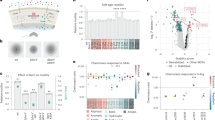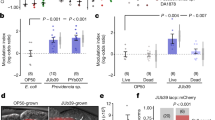Abstract
Paramecium tetraurelia locate their␣foodsource by detecting bacterial metabolites and altering swimming behavior to congregate near bacterial populations on which they feed. Several attractants, such as folate, glutamate, cAMP and acetate have been identified and various aspects of chemoreception, signal transduction and effector mechanisms have been described. Here we characterize the Paramecium chemoresponse to biotin. An essential enzymatic cofactor in all cells, biotin is secreted by a large number of bacterial species during growth phase. P. tetraurelia are strongly attracted to biotin with a half-maximal behavioral response at 0.3 mmol · 1−1 in T-maze assays. Physiological recordings from whole cells show that cells hyperpolarize in a concentration-dependent manner in biotin. Whole-cell binding assays utilizing 3H-biotin identify a saturable and specific binding site with an apparent dissociation constant of 0.4 mmol · l−1. The biotin analogs desthiobiotin and biotin methyl ester are also strong attractants. Diaminobiotin fails to attract P. tetraurelia at 1 mmol · l−1, but does interfere with the biotin chemoresponse and displaces 3H-biotin from whole cells. We hypothesize that the keto group and/or fidelity of the ureido ring of biotin are necessary for biotin chemoresponse.
Similar content being viewed by others
Author information
Authors and Affiliations
Additional information
Accepted: 23 April 1998
Rights and permissions
About this article
Cite this article
Bell, W., Karstens, W., Sun, Y. et al. Biotin chemoresponse in Paramecium. J Comp Physiol A 183, 361–366 (1998). https://doi.org/10.1007/s003590050262
Issue Date:
DOI: https://doi.org/10.1007/s003590050262




